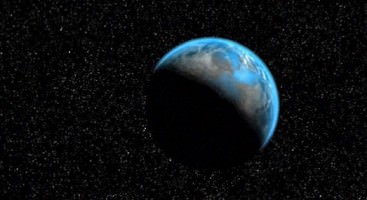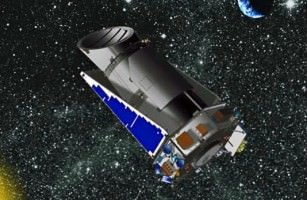What do Scientists Consider the “Habitable Zone” for Planets?
You may have seen recent news stating that scientists have discovered several new planets that may support thanks to the Keplar Space Telescope, a spacecraft that is currently traveling through space and observing distant planets, stars, and solar systems. Thanks largely in part to the work being done by the Keplar Space Telescope, scientists have discovered around 2,300 planets that may be capable of supporting extraterrestrial life. However, this raises the question – what exactly is the Habitable Zone for planets, and what does this have to do with alien life?
One of the main features that many scientists believe can lead to discovery of life outside our own planet is finding another planet with life-supporting qualities similar to Earth. While this may seem to be a slightly close-minded approach regarding the types of life that may exist outside of the conditions we are familiar with, it does potentially provide better focus on what we should be looking for when we try to find extraterrestrial life, and ultimately increases our odds of finding it.
 While many scientists don’t focus on finding a planet exactly like our own, one of the general conditions that most look for when trying to discover life in outer space is that the potentially life supporting planet supports the conditions necessary for liquid water. The requirements for having available liquid water on a planet depend on many factors, but one of the first indicators that scientists look for in determining whether or not a planet may have liquid water on it is its position to a star. As you know, Earth orbits the sun at a specific distance. This distance in relation to our own Sun provides for the ability of our own planet to harbor liquid water. Scientists are able to observe other solar systems and determine if any planets in those solar systems share a similar relationship with their own central star. While the central star, the planet in orbit, and the distance between the two do not need to be exactly like earth, the proper relationship between all three of those factors can determine whether or not a planet will support liquid water.
While many scientists don’t focus on finding a planet exactly like our own, one of the general conditions that most look for when trying to discover life in outer space is that the potentially life supporting planet supports the conditions necessary for liquid water. The requirements for having available liquid water on a planet depend on many factors, but one of the first indicators that scientists look for in determining whether or not a planet may have liquid water on it is its position to a star. As you know, Earth orbits the sun at a specific distance. This distance in relation to our own Sun provides for the ability of our own planet to harbor liquid water. Scientists are able to observe other solar systems and determine if any planets in those solar systems share a similar relationship with their own central star. While the central star, the planet in orbit, and the distance between the two do not need to be exactly like earth, the proper relationship between all three of those factors can determine whether or not a planet will support liquid water.
All stars have differing properties, including size, gravitational pull, and energy output. By taking into account all of these properties of a star, scientists can determine at what distance in orbit a planet would need to fall in order to have similar life-sustaining conditions as Earth, especially in regards to the ability to harbor liquid water. This determined distance generally covers a certain range, and this range is called the Habitable Zone. Once scientists determine the Habitable Zone for a star, they look and see if any planets orbit within that Habitable Zone. If a planet does, it is considered capable of harboring liquid water and the promise of it supporting life (at least life as we know it) is much greater.



Scientists are hnidig many things, and if they are willing to disclose this kind of information, just imagine what else is out there. Just like the blocked and edited transmissions from some of the Apollo astronauts about “we have the mothership in sight” and many other transmissions such as that.
[Reply]
I guess in a stnficieic sort of way but whether or not we’ll be able to live on another planet is anyone’s guess.
[Reply]